As the Joint Oireachtas Committee on Assisted Dying prepares to resume special hearings, Prime Time's Louise Byrne reports from Belgium and the Netherlands, where euthanasia has been legal for two decades.
At the Coda Hospice near Antwerp, each room has a terrace opening out to immaculate gardens tended to by volunteers.
A former convent, it has been repurposed into a campus for palliative care. It is a place for people approaching end of life, and also now a place where people's lives can be legally and voluntarily ended.
Twenty years ago, Belgium became the second country in the world to legalise euthanasia.
When we arrive, it is peaceful but not oppressively quiet.
Dr Gert Huysmans is a key member of the medical team. He has been involved in euthanasia for more than 20 years. Doctors like him are central to Belgium's euthanasia system, which now accounts for 2.5% of all deaths in the country.
The process - in some cases referred to as assisted dying - is an option for people with incurable illnesses - mental and physical - causing constant, intolerable suffering, which cannot be alleviated.
Palliative care teams discuss the request for assisted dying with a patient and their family. There are conversations around the reasons for the patient’s anxiety and time is spent talking through and exploring the issues, Dr Huysmans explains.
If the person seeking to die makes repeated, explicit, requests for an assisted death, a time and date may be set for the final procedure.
Often, euthanasia is carried out in hospices.
Around an hour before a patient is to be euthanised, a vein is prepared for the infusion.
Lethal drugs are removed from a locked safe under strict protocols.
When the time comes, relatives sit at one side of the bed and the doctor on the other, as a powerful sedative is administered. After the patient enters a deep sleep, the lethal dose of drugs is injected.
The whole process takes just a few minutes. Dr Huysmans encourages family members to attend.
"It's quite peaceful," he says. "Families are often surprised that it is as short."
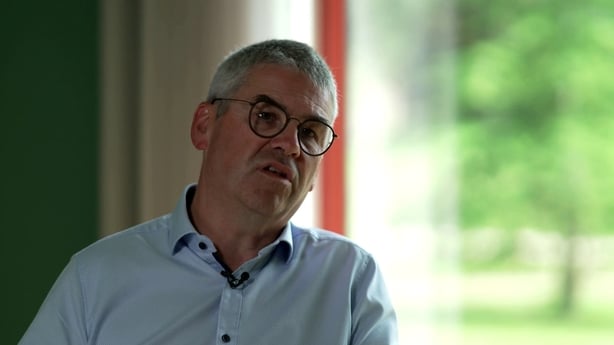
Rates of euthanasia among patients at the Coda hospice are consistent at around five per cent, but the figures for non-terminal cases across Belgium are rising.
In 2022, almost 3,000 people were euthanised.
An equivalent rate in Ireland would see approximately two deaths per day.
In Belgium in 2022, 70% of patients choosing assisted death were over 70 years old, 42% were over 80 years old. Some 1.2% of euthanasia procedures were carried out on patients younger than 40 years old.
Cancer remains the most common reason, and officials said three in every four requests came from patients presenting with "several types of suffering, both physical and psychological."
While Belgian palliative doctors are part of the euthanasia system, their Irish counterparts take a different view. The Irish Association for Palliative Care and the Irish Palliative Medicine Consultants' Association are against its introduction here.
St Francis Hospice in Raheny shares the same sense of calm as the hospice in Antwerp. There are patients gathered with their families in the gardens, and no sense of an overwhelmed healthcare system. Nevertheless, palliative doctors maintain that it can be difficult to get some people to engage with their services.
"Some are concerned that palliative care is only about giving you drugs which will cause you to die," Dr Regina McQuillan explains.
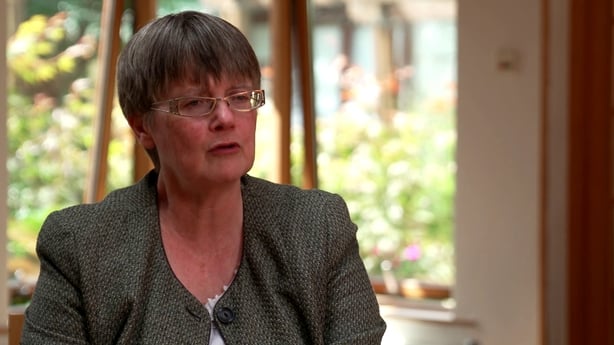
She says patients could be even more fearful of coming to doctors if they considered that they would be offered assisted suicide, and is concerned introducing assisted death into healthcare settings could undermine the doctor-patient relationship.
"I am worried that this will be very damaging to health care and to society in Ireland."
Dr McQuillan says for most people under hospice, hospital or GP care, death can be very comfortable. She strongly rejects the contention that some palliative care is a form of euthanasia, insisting that her role is only to support people through the dying phase.
Disability activist Conor Lynott is also worried about how society could change if legislation is introduced here.
"My concern is that resources would be diverted towards assisted dying rather than areas around quality of life that I'm looking for the Government to focus on," he says.
Mr Lynott is 27 years old and has cerebral palsy. He wants more focus on improving the lives of people with disabilities and life-limiting illnesses, rather than consideration given to assisted death.
The argument, he says, is not contingent on religion. "As much as that is important to me, I don't think you need a Catholic doctrine to be against assisted dying."
"Even with the presence of safeguards, there is going to be political pressure on people to use assisted dying to cater for other solutions," he says.
While some proponents of assisted dying say the intention is to address cases where patients are in a lot of pain, Mr Lynott believes the outcome could see it becoming "a viable solution to a whole lot of problems that have nothing to do with physical pain."
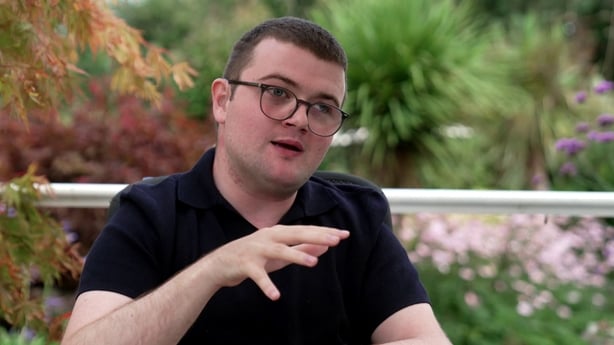
Across the world, legal, assisted dying is available in a limited, but growing number of jurisdictions. The rules differ by location.
Countries such as Australia and Portugal – as well as the eleven U.S. States with assisted dying laws - only permit it for people who are terminally ill.
Some allow it for people who are not dying but are living with incurable, debilitating, physical conditions while other jurisdictions, including Belgium, the Netherlands, and Spain include mental illnesses under their euthanasia laws.
Places also differ in how assisted dying is actually carried out.
The eleven U.S. states, along with Austria and Switzerland, only allow a form of assisted dying where the patient themselves can administer the lethal drugs.
Countries like Canada, Australia, the Netherlands, and Belgium permit doctors to directly assist in ending someone else's life.
For these reasons, the terms 'assisted suicide' and ‘euthanasia’ are sometimes used to distinguish the two practices.
In the hospice in Antwerp, Dr Gert Huysmans has not counted how many cases of euthanasia he has been involved in, but says he would not like to do it often.
He is still anxious, 20 years on, about the power it gives doctors. Euthanasia should not be viewed in the same way as more routine parts of his job, he says.
He rejects a suggestion of a contradiction between doctors saving lives and also taking them, explaining that he does not view palliative care as life saving, rather as helping to make life comfortable.
"We try to improve quality of life in the last weeks and months of someone's life and we know now, after 20 years, that not every request for euthanasia will disappear with good palliative care."
According to Dr Huysmans, pain is hardly ever the reason for assisted dying. Patients, he says, are exhausted from fighting illness.
"We strive for the highest quality of life possible in the given circumstances. And if that is not possible anymore, we strive for a good way of dying.
"For one in 20 of our patients, that good way of dying can be euthanasia."
Read more: Cava and music: how one euthanasia patient spent their final day
There has been some criticism of how broad the euthanasia system has become in Belgium.
Recent high-profile cases of assisted deaths include a young woman who developed PTSD following a terrorist bombing, 45-year-old twins who were deaf and going blind, and a transgender man who was helped to die after a failed gender reassignment surgery.
Children can also be euthanised under Belgian law. On average, it happens once every two years.
Similar criteria are in place in neighbouring Netherlands.
"I know many people who had initially advocated euthanasia as a legal option now say that it has gone too far, but it's too late," says Professor of Healthcare Ethics Theo Boer, from the Protestant Theological University in Amsterdam.
Professor Boer is set to appear before the Oireachtas committee later this year where he will caution against the introduction of assisted dying in Ireland.
He says euthanasia has become a default way to die in some regions of the Netherlands, and the frequency that it occurs fosters "despair" in society.
"It means that we have come to see death as kind of a healing for our suffering, whereas I think that we should not undermine our resolve to deal with life's difficulties."
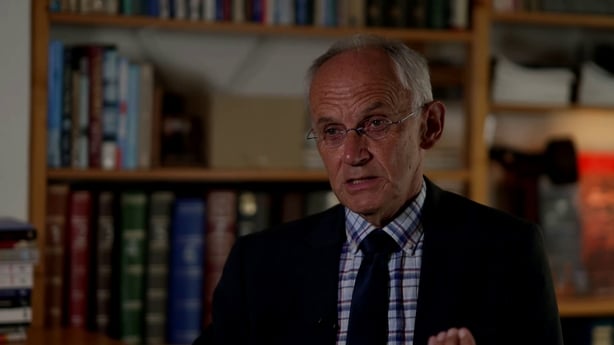
Professor Boer argues that if there is a public demand for assisted dying, to keep numbers low the laws should require the patients themselves to administer the lethal drugs, rather than allow doctors to do so.
The Dutch experience, he argues, is that pressure is put on doctors by patients and families.
While he believes that euthanasia may be acceptable in rare instances, he says these should be dealt with on a case-by-case basis, rather than through legislative change.
"Once killing becomes a procedure that is more or less a standard option, I think we should hear alarm bells because ending a human life should be the exception and not the rule," says Professor Boer.
The number of people dying in the Netherlands with the help of euthanasia rose almost 14% last year to 8,720. Assisted dying now accounts for 5.1 per cent of all deaths in the country.
Opponents of introducing legislation on assisted death point to such statistics and argue that even when tightly controlled rules are put in place, they broaden over time.
"The slippery slope argument is not liked by many because it seems that you are scaremongering," says Professor Boer.
"But if something wags their tail like a dog and barks like a dog perhaps it is a dog."
However, Tom Curran, Director of Exit International in Ireland points out that in other jurisdictions such as Oregon in the US, the rates of assisted dying have been relatively stable and the criteria have not significantly broadened since they were first introduced in 1997.
"The death rate hasn't gone up in Oregon, the same people are dying, they're just dying peacefully," he says. Any pressure that patients feel under to end their lives is a separate issue to euthanasia laws, according to Tom Curran.
"If the culture we're in makes a person feel that they are not wanted, that's a fault of the culture, it's not the person," he says.
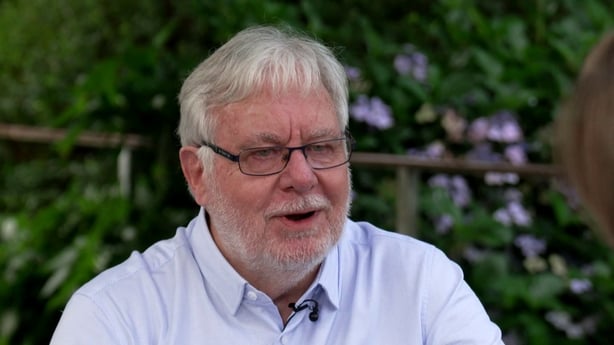
Switzerland is the only country which allows foreigners to avail of assisted suicide, and Irish people are travelling in greater numbers than reported, Tom Curran believes, adding that patients use overseas addresses to avoid prosecution of their relatives.
While suicide was decriminalised in Ireland in 1993 it is still illegal to assist in a suicide, an offence which carries a potential jail term of 14 years.
Exit International offers information on assisted dying to people in Ireland and Mr Curran estimates that he has been contacted by "dozens, if not hundreds" of people who have subsequently ended their own lives.
At St Francis Hospice in Raheny, Dr Regina McQuillan insists that introducing any rules around euthanasia here would remove protection for people who are vulnerable and diminish the lives of those living with serious illness or a disability.
"Normalising" assisted death for one group would, she says, naturally extend to other groups.
Often the family of hospice patients are worried about pain or discomfort and ask whether death can be brought about more quickly, she says.
"But when you assess the person themselves, they are not suffering, they are comfortable. So they are unaware and comfortable, but their families are distressed."
Creating exceptions for assisted dying in specific cases would be hard to manage and control, she argues, drawing a comparison with the rules of the road.
"You could argue that they infringe on the rights of somebody who's a very good driver but overall, we need to protect society."
Resuming next week, the Joint Oireachtas Committee on Assisted Dying will explore these issues, and hear from medics, academics, campaigners and advocates. It will make recommendations to the Dáil and Seanad in March 2024.
In the meantime, in Dublin, there is a family sitting in the hospice garden, smiling and cracking jokes with their dad. Another patient is lying on a blanket on the grass, watching the branches of the trees blow in the wind.
In Antwerp a man is winding his way slowly through a garden path while a palliative physiotherapist is in the canteen encouraging another patient who can, to walk, just a little bit.
In the midst of death, life persists.
Watch reporter Louise Byrne and producer/director Aaron Heffernan's report on assisted dying on Prime Time at 9.35pm on RTÉ One.
If you have been affected by issues raised in this piece, assistance can be found at rte.ie/helplines






